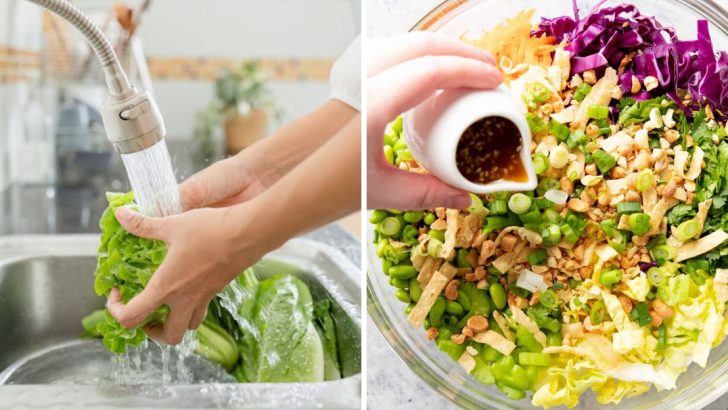Chopped salads might seem simple, but one small misstep can turn a fresh, vibrant dish into a soggy, flavorless disappointment. The secret to a perfect chop isn’t just about cutting ingredients into tiny pieces—it’s about balance, texture, and technique.
Many of these common mistakes sneak into salads unnoticed, sabotaging your efforts without you even realizing it. Unlock the tricks to transforming your chopped salads into crisp, colorful masterpieces every time.
1. Dull Knife Disasters
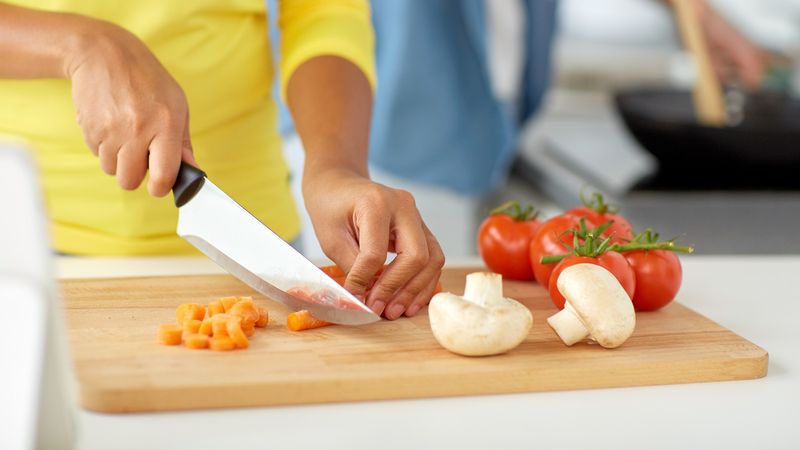
Hacking at veggies with a butter knife? You might as well use a baseball bat! Dull blades crush delicate cells instead of cleanly slicing through them, turning your crisp ingredients into a bruised, oxidizing mess that wilts faster than ice cream in July.
Professional chefs sharpen their knives daily for a reason. A razor-sharp blade creates clean cuts that help ingredients maintain their structure, flavor, and nutrients. Plus, it’s actually safer – you’ll use less force and have more control.
2. Vegetable Size Matters
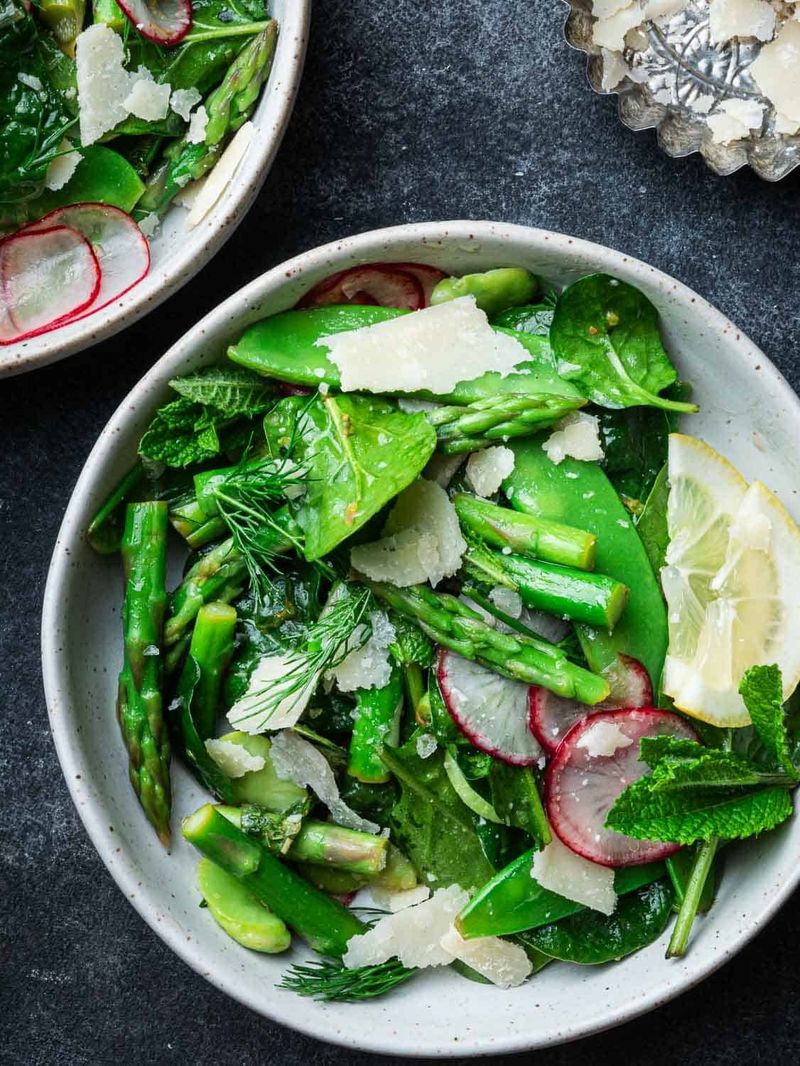
Gigantic hunks of cucumber alongside microscopic bits of carrot? That’s not a chopped salad—it’s ingredient anarchy! Inconsistent cutting creates a texture nightmare where some bites are all crunch while others disappear without a trace.
Uniform pieces ensure balanced flavor in every forkful. When ingredients are similarly sized, they mix properly and distribute dressing evenly. Nobody wants to tackle a chunk of onion the size of Rhode Island while hunting for those tiny tomato fragments.
3. Washing Properly
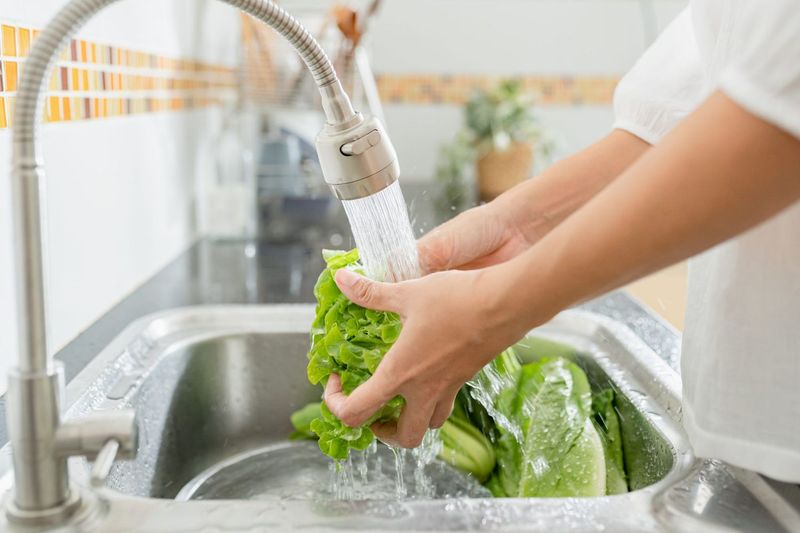
Skipping the rinse step? Yikes! Your “healthy” salad might come with a side of pesticides, dirt, and invisible bacteria. Even organic produce needs washing—unless you enjoy the occasional crunch of soil or surprise visit from a tiny garden resident.
Running water alone isn’t always enough. Leafy greens harbor dirt in their nooks and crannies, while waxy vegetables like peppers need a gentle scrub to remove residues. That pre-washed bag isn’t necessarily spotless either.
4. Drowning In Dressing
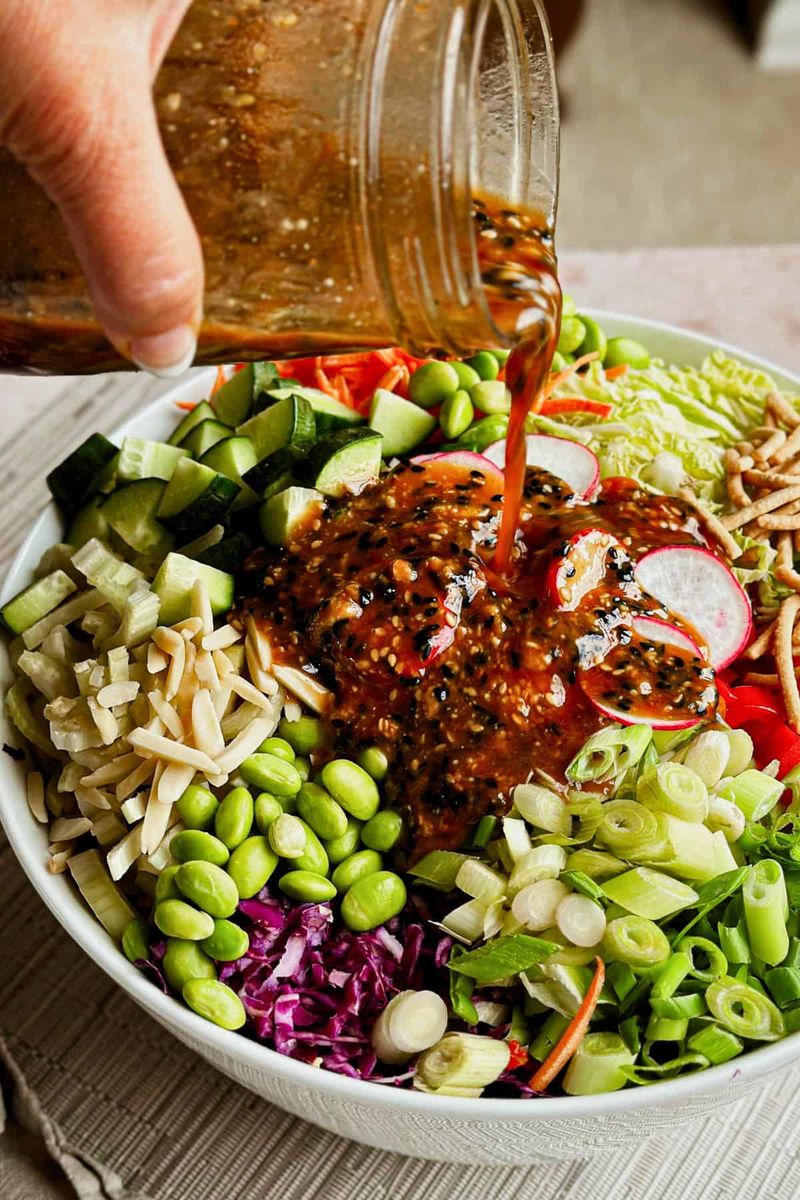
Holy oil slick! Dumping half a bottle of dressing onto your masterpiece transforms crisp vegetables into soggy, calorie-laden soup faster than you can say “ranch.” That beautiful texture you worked so hard to create? Gone in sixty seconds.
Dressing should enhance flavors, not hijack them. Most people use 3-4 times more dressing than necessary, turning their nutritious bowl into a fat bomb. A proper chopped salad needs just enough to lightly coat each piece.
5. Timing Tragedies
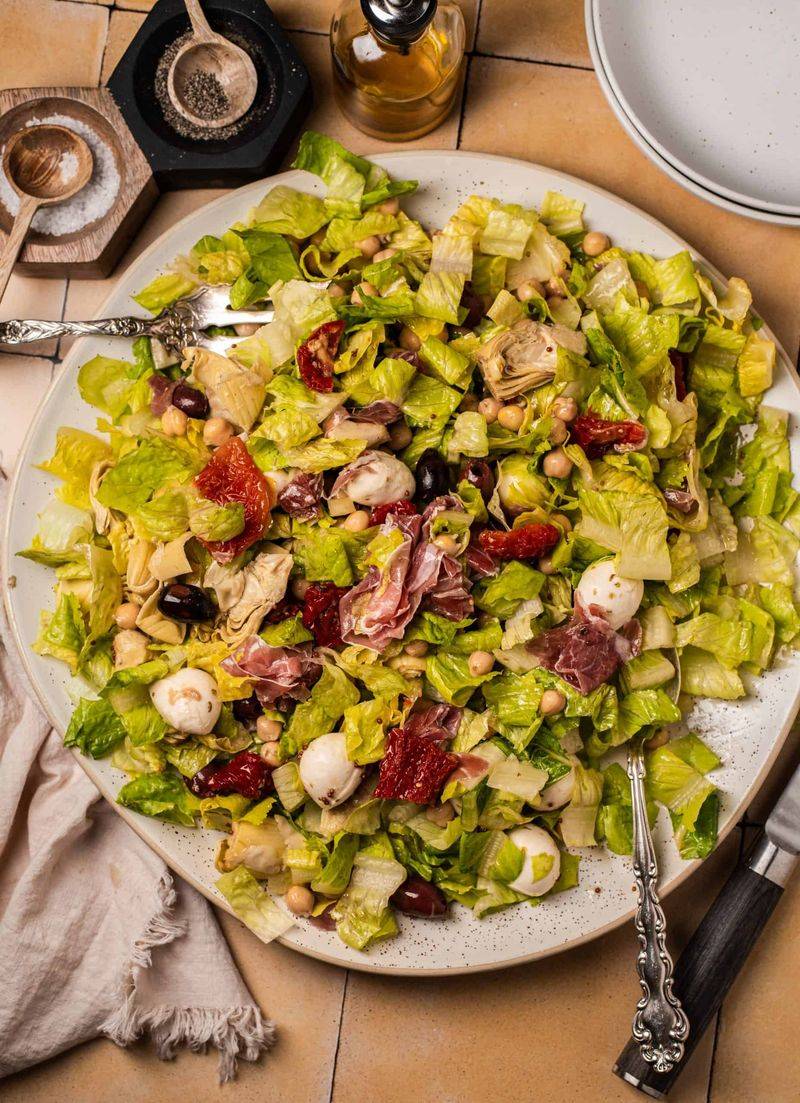
Prepping your masterpiece Monday for Friday’s lunch? That’s not meal prep—it’s vegetable abuse! Cut vegetables release moisture and enzymes that trigger rapid deterioration, turning yesterday’s vibrant creation into today’s limp disappointment.
Oxygen exposure accelerates browning and nutrient loss. Even refrigerated, chopped vegetables lose their structural integrity after a day or two. Those sad, slimy cucumbers and rust-edged lettuce pieces aren’t just unappealing—they’re nutrition diminished.
6. Protein Proportion Problems
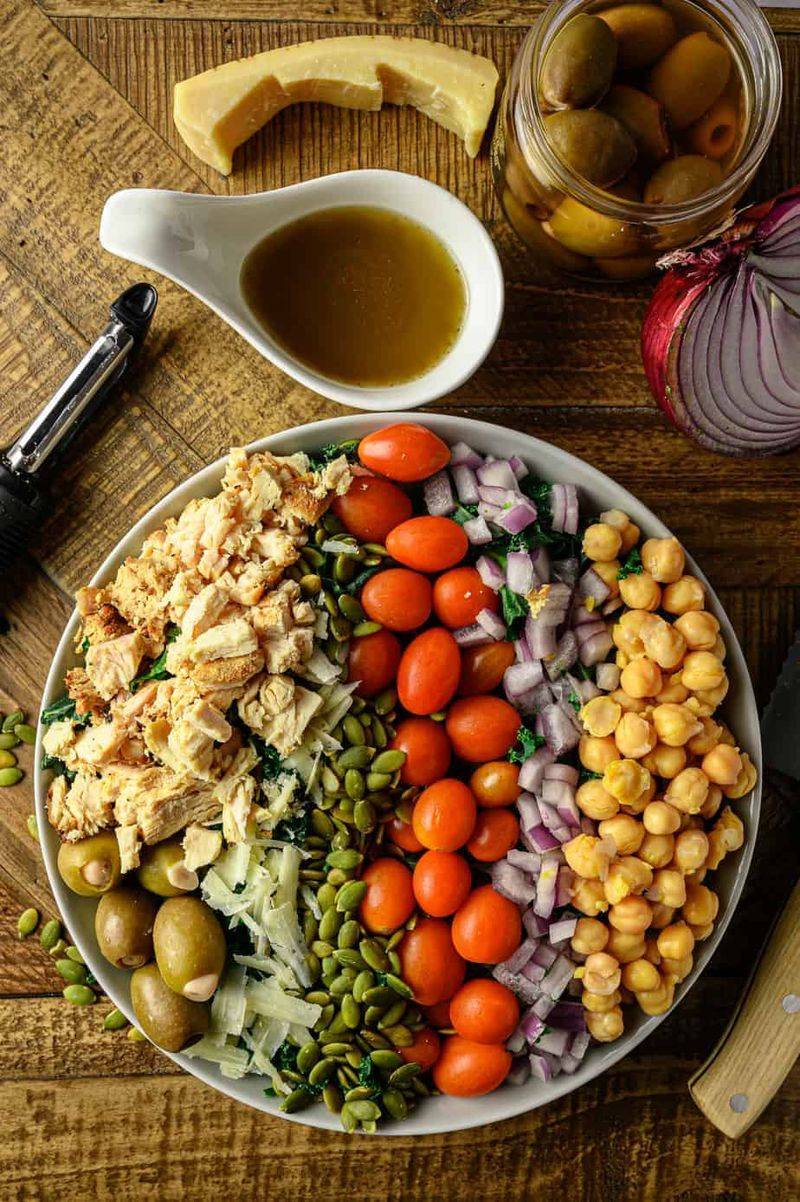
Buried your greens under a mountain of chicken? Congratulations on creating a meat dish with garnish! A properly balanced chopped salad shouldn’t look like protein with a side of vegetables—nor should it leave you hunting for sustenance among endless lettuce.
Protein transforms a side salad into a meal, but moderation is key. Too much crowds out other ingredients and overwhelms delicate flavors. Too little leaves you hungry again an hour later, defeated and eyeing the vending machine.
7. Texture Variety

Crunch, crunch, crunch… and more crunch? Boring! A one-dimensional chopped salad is like a song played on a single note—technically correct but utterly forgettable. Your mouth craves variety, not an endless percussion section of raw vegetables.
Texture contrasts create eating excitement. Soft avocado against crisp bell pepper. Tender beans alongside crunchy seeds. Chewy dried fruit complementing crisp lettuce. These combinations turn each bite into an adventure rather than a repetitive chore.
8. Temperature Blunders
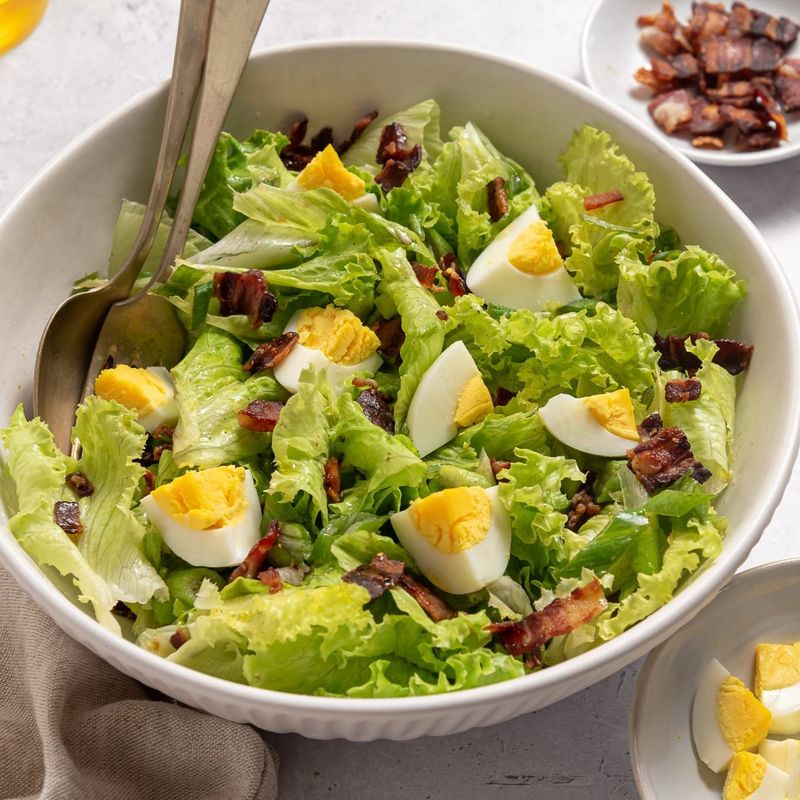
Fridge-frigid ingredients straight into your bowl? Your taste buds are literally numbed by the cold! Ice-cold vegetables have muted flavors—it’s science. Taste receptors function optimally at moderate temperatures, not when they’re being assaulted by arctic lettuce.
Warm ingredients wilt greens instantly. Tossing hot chicken or freshly boiled eggs onto delicate leaves is basically cooking them on contact. That sizzling bacon might seem like a good idea until your perfect greens collapse into sad, wilted submission.
9. Seasoning Shortfalls
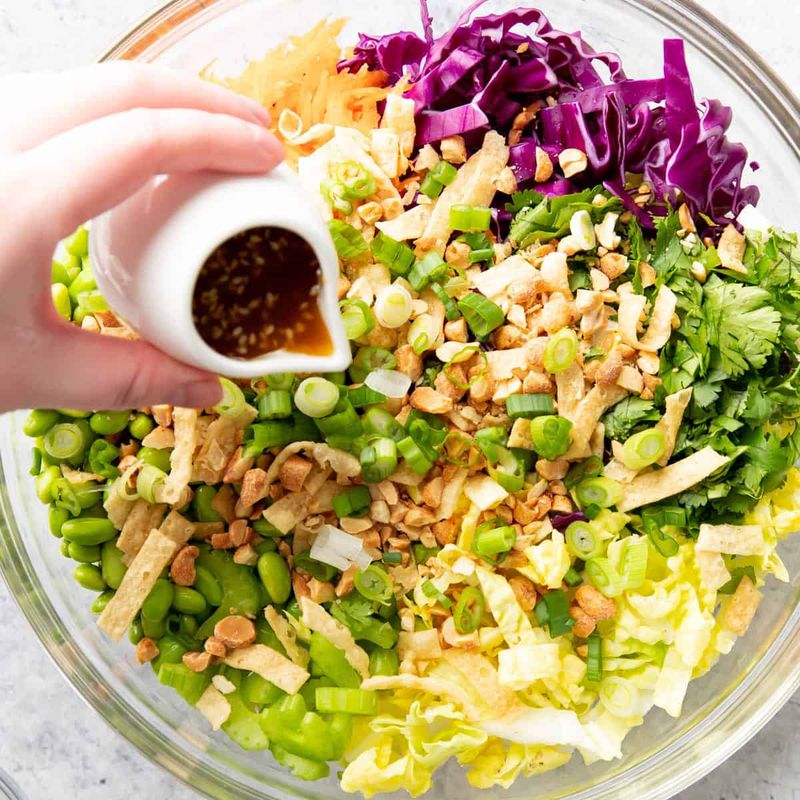
Salt-free and sad! The biggest crime against vegetables isn’t overcooking—it’s under-seasoning. Even with dressing, unseasoned ingredients taste flat and one-dimensional, like watching a movie with the sound turned way down.
Vegetables contain water, which dilutes flavors. A light sprinkle of salt draws out moisture, concentrates taste, and enhances natural sweetness. Freshly cracked pepper adds complexity that pre-ground dust can’t match. Herbs contribute aromatic notes that transform ordinary into extraordinary.
10. Dressing Timing Disasters

Dressed your salad yesterday for today’s lunch? Hello, soggy nightmare! Dressing acts like a marinade, breaking down cell walls in vegetables. What starts as crisp quickly transforms into limp, weepy sadness when dressed too far in advance.
Acid in vinaigrettes actually “cooks” delicate greens chemically, similar to ceviche. Oil coats leaves, preventing moisture evaporation and accelerating wilting. The result? A puddle of liquid at the bottom of your container and vegetables that have surrendered all structural integrity.
11. Board Bedlam

Chopping on a postage stamp-sized cutting board? That’s not meal prep—it’s vegetable juggling! When ingredients constantly roll off edges, you’re not just wasting food; you’re creating inconsistent pieces and risking finger injuries from cramped cutting.
A proper workspace prevents the “chop and chase” game where half your ingredients escape to the floor. Crowded cutting means poor technique, with your knife at awkward angles instead of the efficient up-and-down motion professionals use.
12. Ignoring The Importance Of A Bowl
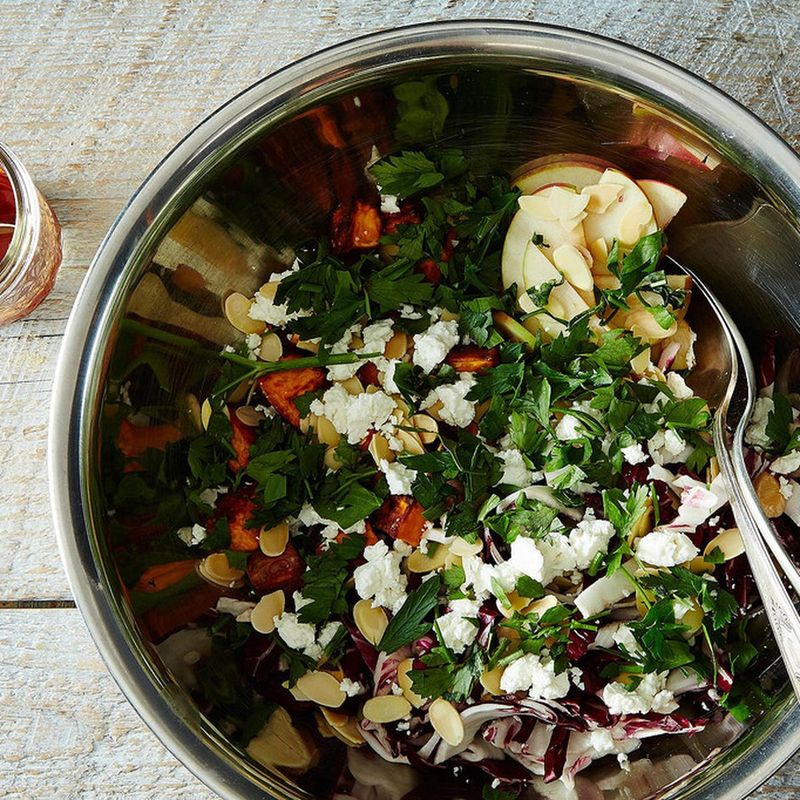
Mixing in that shallow dinner plate? Catastrophe in 3…2…1! Half your carefully chopped ingredients just launched across the kitchen. A proper chopped salad needs space for tossing—not a flat surface designed for finished dishes.
Bowl depth matters as much as width. Shallow vessels make proper mixing physically impossible, forcing you to either under-mix (uneven dressing distribution) or risk an ingredient avalanche. The walls of a deep bowl contain the action, allowing aggressive tossing without casualties.
13. Moisture Management Mishaps

Skipped the drying step? Enjoy your watery disaster! Excess moisture is the silent killer of great salads, diluting dressings and creating that sad pool of pink-tinged liquid at the bottom of your bowl.
Water from rinsing clings to leaves and vegetables, even when they seem dry to the touch. This invisible enemy weakens dressing, prevents proper adhesion to ingredients, and creates that waterlogged texture nobody wants. Wet ingredients also spoil faster when stored.
14. Flavor Profile Failures

Sweet strawberries, blue cheese, olives, AND pickled onions? That’s not a salad—it’s flavor warfare! Randomly combining ingredients without considering how they interact creates bizarre taste clashes that confuse your palate instead of delighting it.
Every great chopped salad follows a flavor logic. Mediterranean ingredients harmonize because they’ve evolved together culturally. Asian-inspired combinations work for the same reason. Mixing flavor traditions without purpose creates discord rather than symphony.
15. Neglecting The Chop In Chopped Salad
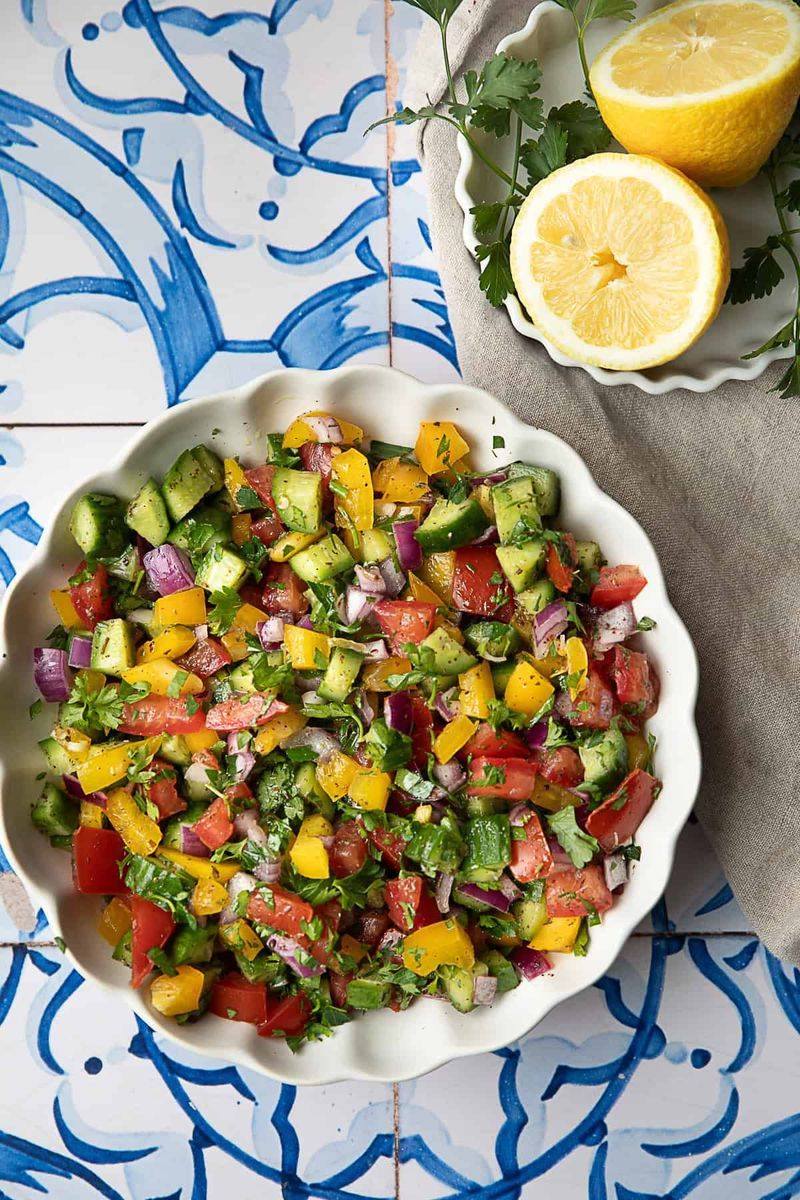
Calling that jumble of whole lettuce leaves and large vegetable chunks a “chopped” salad? That’s like calling a hammer tap a demolition! True chopped salads require ingredients cut small enough to get multiple items in every bite—that’s literally their defining characteristic.
Proper chopping creates uniform pieces that blend flavors and textures. When everything’s cut to similar dimensions, dressing coats more evenly and each forkful delivers the full experience rather than isolated ingredients.

